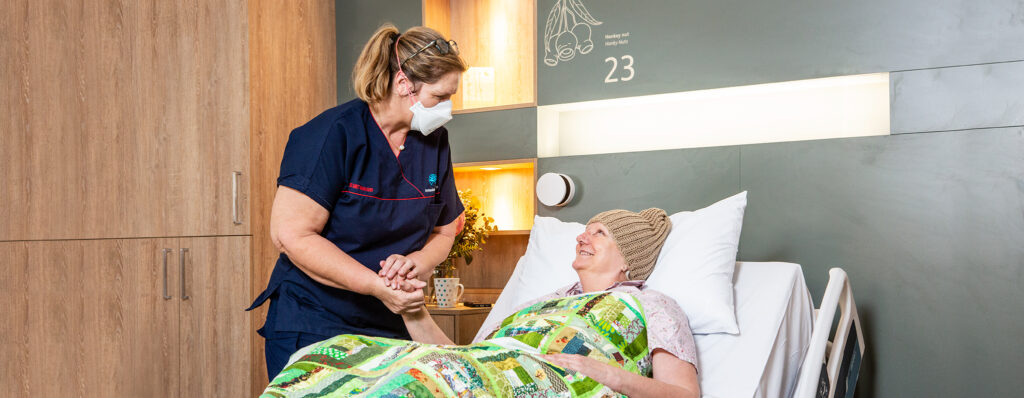EMHS infrastructure – investing for our patients’ care
Heliport heralds new era in rescues
The opening of RPH’s new $10 million heliport in May 2022 ushered in a new era of access to care for critically injured and sick patients across WA.
As home to the State’s Major Trauma Unit and Spinal Service, RPH receives about 300 patients per year by helicopter.
The heliport features a 788 square metre elevated deck — 49m above ground — and link-bridge connected to an inpatient reception area.

Unlike the helipad it replaces, the new landing facility can support the arrival of larger next-generation helicopters, which are expected to be in service and assisting WA communities by late 2023.
These aircraft feature enhanced technology and have greater range and speed than earlier models. They will enable patients to be airlifted faster and from more distant locations than previously possible.
The new heliport was needed to meet Civil Aviation Safety Authority regulations and is capable of accommodating aircraft such as Blackhawk and Seahawk helicopters, should they be required in a state emergency. On 26 April 2022, a Blackhawk helicopter performed a test landing on the new heliport ahead of its opening.
The landing captured the imagination of staff who were eager to catch a glimpse of the spectacular one-off event.
The new heliport was officially launched on 26 May 2022 by Health Minister Amber-Jade Sanderson (MLA) and Emergency Services Minister Stephen Dawson (MLC).
New ward helping to keep patients on the move
Ensuring patients have access to the care they need, when they need it, is a challenging goal but one for which EMHS continually strives.
The opening of Ward 1 — a slow-stream rehabilitation ward at BHS in March 2022 — was an important development that is playing a key role supporting patient flow through RPBG.
By providing appropriate rehabilitative support for patients who no longer require acute inpatient — or intensive specialist rehabilitation — care, Ward 1 helps free up beds at RPH.
While the 15-bed ward caters for patients nearing the end of their RPBG admission, it continues to support their rehabilitation, focusing on functional independence and maintaining improvements already made.
In the pipeline
A major redevelopment of KH is set to significantly enhance the patient experience for those receiving care at the facility for life-limiting illnesses.
In May 2022, builders turned the first sod on the $9.5 million project that will transform the hospital to include:
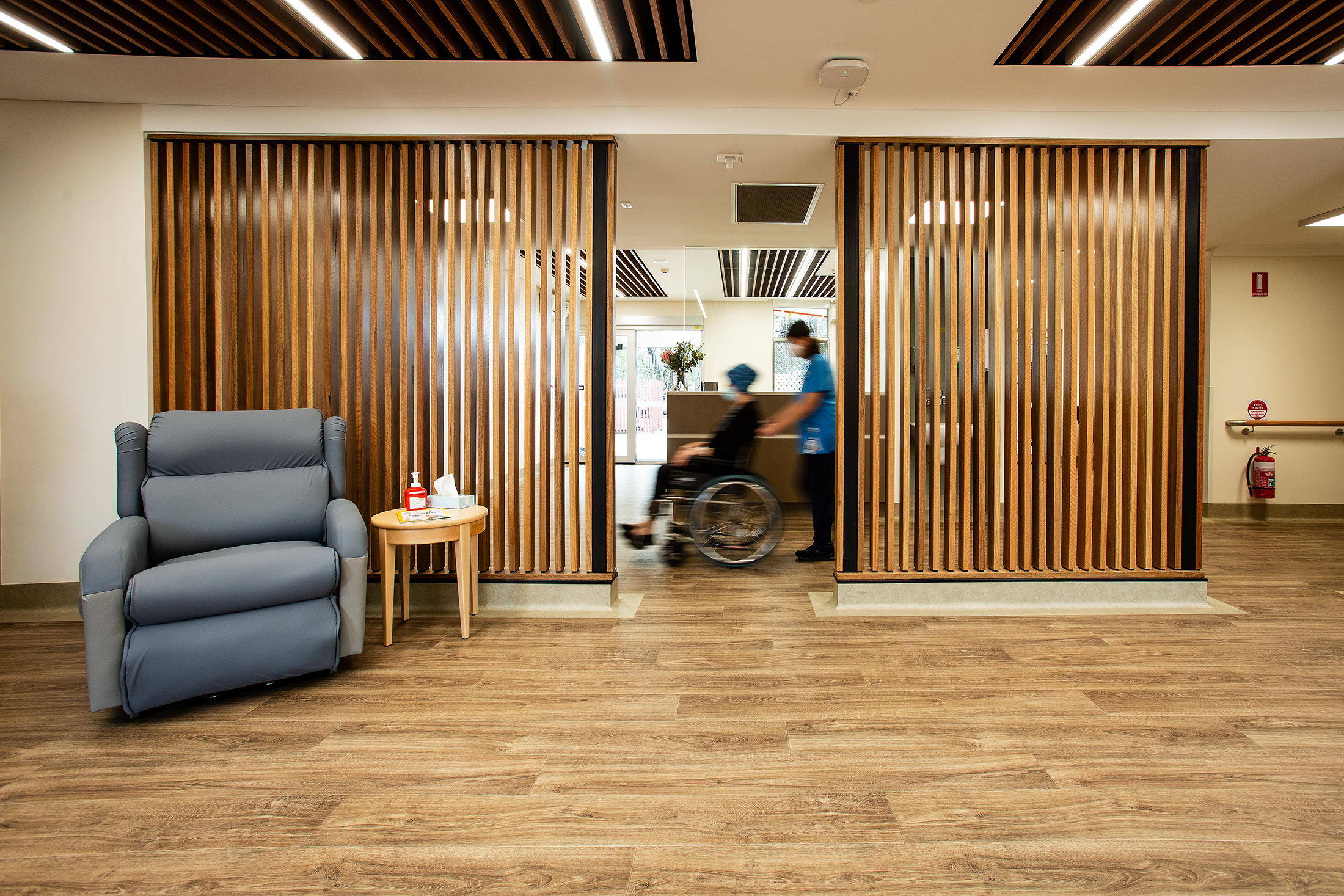
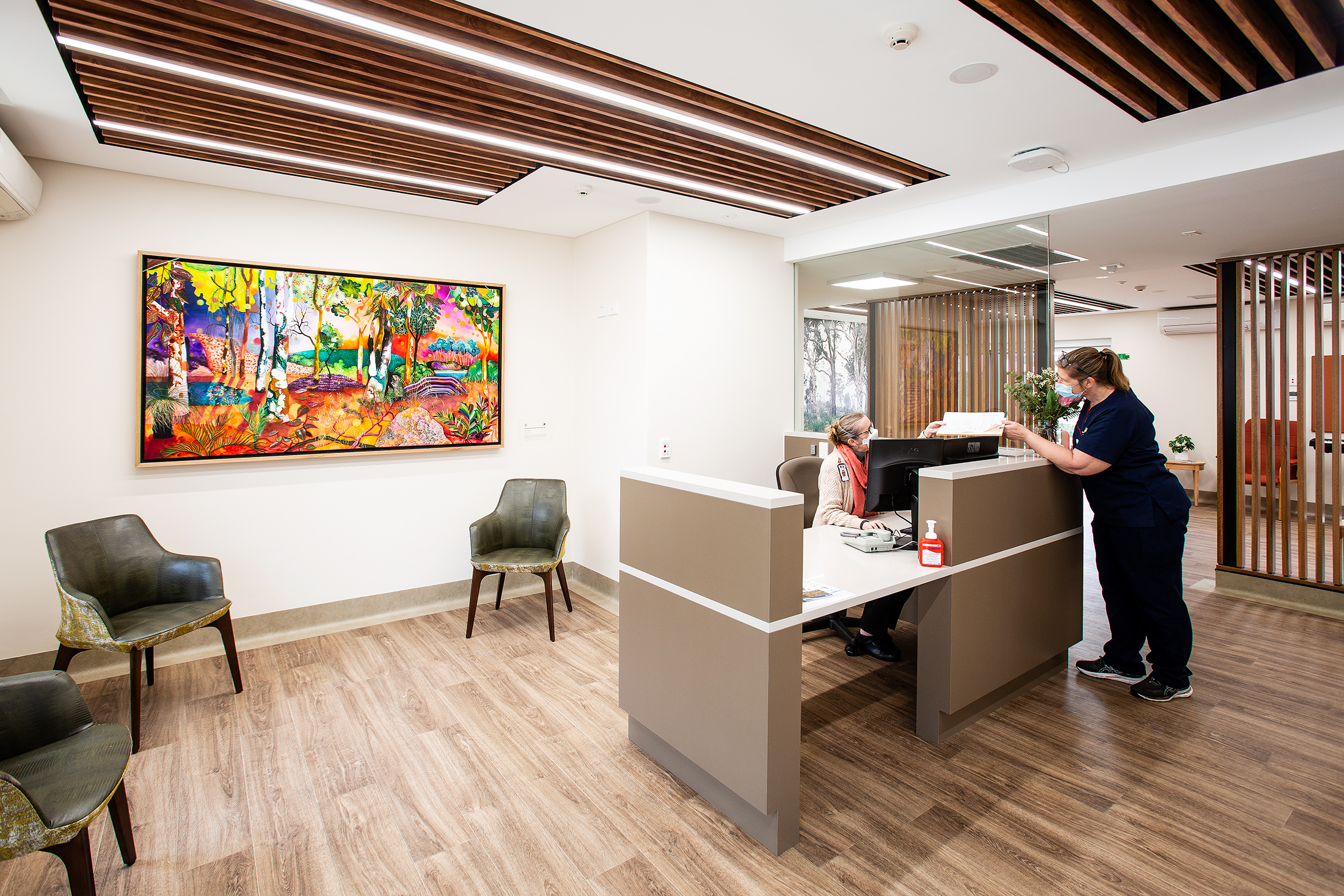
Photos: Kalamunda Hospital Day Hospice
- a refurbished wing to provide a new Day Hospice with fit-for-purpose therapy rooms, a dedicated entrance, waiting rooms and a social room
- upgraded rooms and ensuites in the inpatient unit
- two rooms with facilities designed for bariatric patients
- a redeveloped family room, for families to stay overnight, which also includes a hydrotherapy bath
- enhanced landscaping and improved access to outdoor spaces.
KH has been an important part of the local community since 1973 and is EMHS’ specialty palliative care inpatient service.
The works will position KH as a centre of palliative care excellence, and improve the environment for both patients and their loved ones.
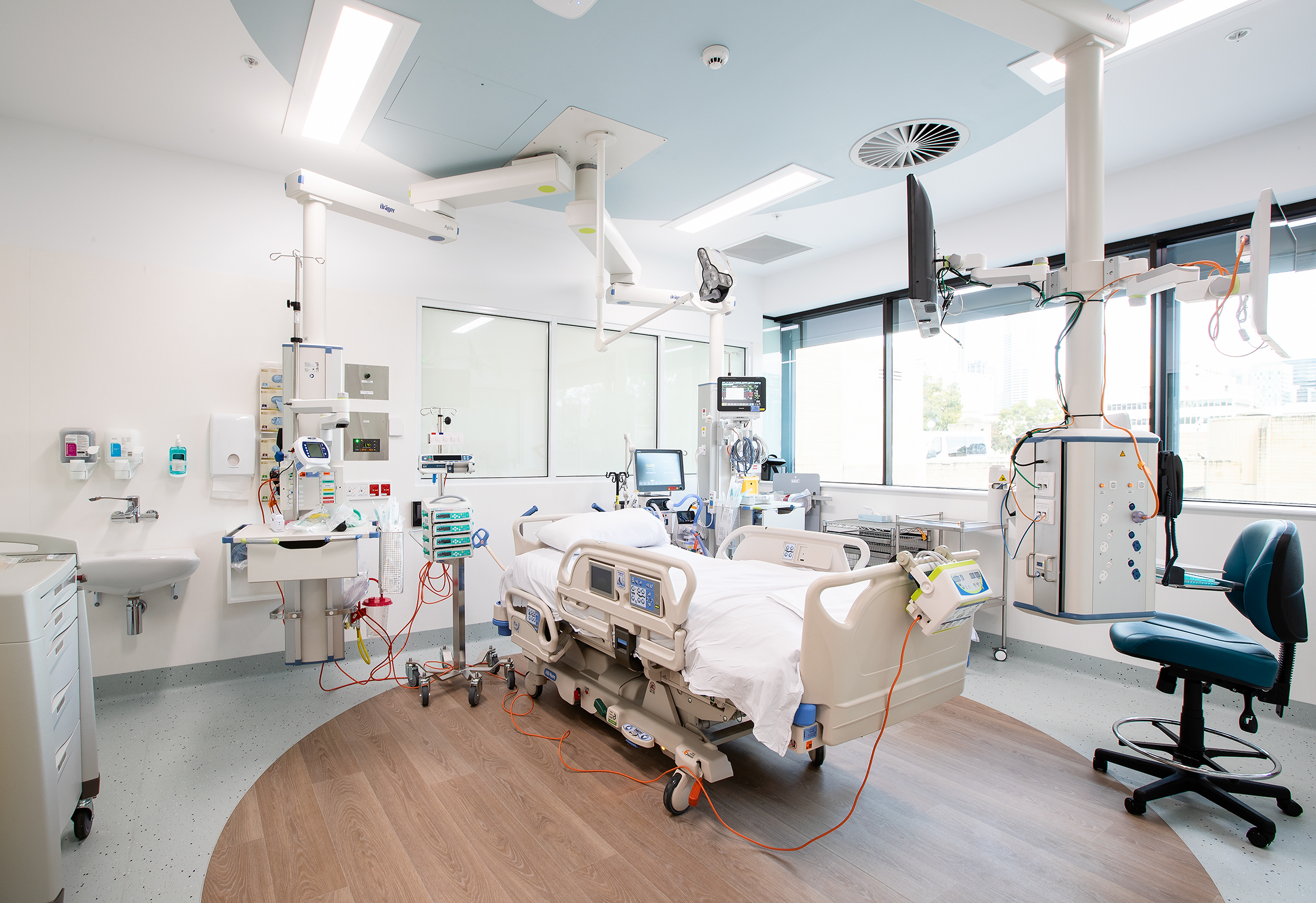
RPH’s new Intensive Care Unit
In March 2022, RPH opened a new 24-bed ICU.
The unit became the fourth ICU to be built at EMHS’ tertiary hospital (its first was built in 1966) and was designed to accommodate the sickest of our patients.
The development of the new facility was a departure from the initial plan to refurbish the hospital’s existing ICU.
The resultant space was more than one and a half times the size of its forerunner — 2550sqm versus 1800sqm — and includes:
- a positive pressure room
- four negative pressure rooms
- two dedicated bariatric rooms
- a dedicated simulation training room to support the ongoing development and education of the ICU workforce
- a private room to support family and friends during some of the most difficult times.
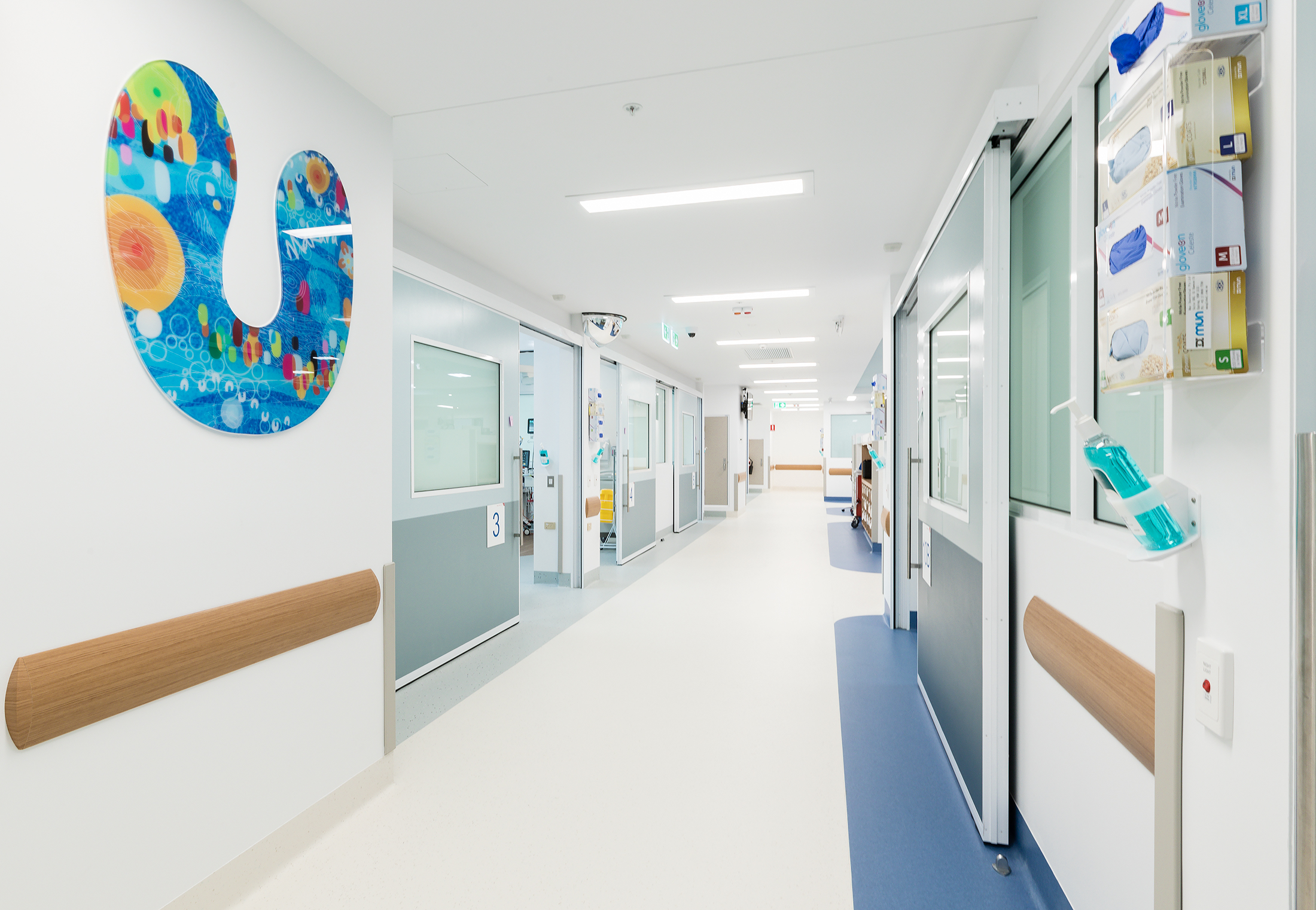
The design also facilitated frequent air changes throughout, separate patient rooms fitted with switch glass windows, and a ventilation system that enables the safe accommodation of both COVID and non-COVID patients.
To improve clinician access to patients for procedures — and enable easy reconfiguration of rooms — ceiling-mounted pendants were installed that were both movable and equipped with power, oxygen, suction, a patient monitor, storage for airway equipment and emergency call buttons.
A circadian lighting system to assist in the management of patients at risk of experiencing delirium is another special feature of the unit. It works by mimicking natural lighting rhythms to help patients gauge the time of day.
The new unit was also wi-fi enabled and equipped with a Clinical Information System to support improved patient care through enhanced management of clinical information.
Natural light floods the unit during the day, enhancing the environment for staff and patients.
Brightly coloured artworks which depict the six seasons of the Noongar calendar adorn the unit. These were fabricated in a special glass to enable easy cleaning and compliance with strict ICU infection prevention and control standards.

EMHS puts nurses on fast-track to ICU
A critical shortage of ICU nurses and an expected surge in COVID cases forced EMHS to become creative in boosting its ICU nursing workforce.
It developed an intensive Accelerated Training Program (ATP) that gave registered nurses the chance to fast-track careers into ICU nursing, irrespective of their previous work experience.
The ATP launched at the end of 2021 and by the close of 2021-22, it had boosted EMHS’ ICU nursing contingent by 50.32 FTE — 44.32 at RPH and six at AHS. (At AHS, a further nine nurses from other wards and departments completed the training and were available for the ICU, as activity demand increased or permanent ICU FTE became available.)
The ATP is believed to be unique in Australia, in that it is designed to provide a long-term workforce solution to staff shortages, rather than a temporary short-term fix. Also novel, is that it is open to nurses with little or no experience of working in an ICU or other high acuity setting.
The program, which was developed by senior ICU staff and staff development nurses, provides two to three months of intense, supported training that includes ICU theory, simulation exercises and on-the-job training alongside experienced ICU nurses.
Nurses who complete the program emerge equipped and competent to care for ICU patients unsupervised, including being able to assist with intubation.
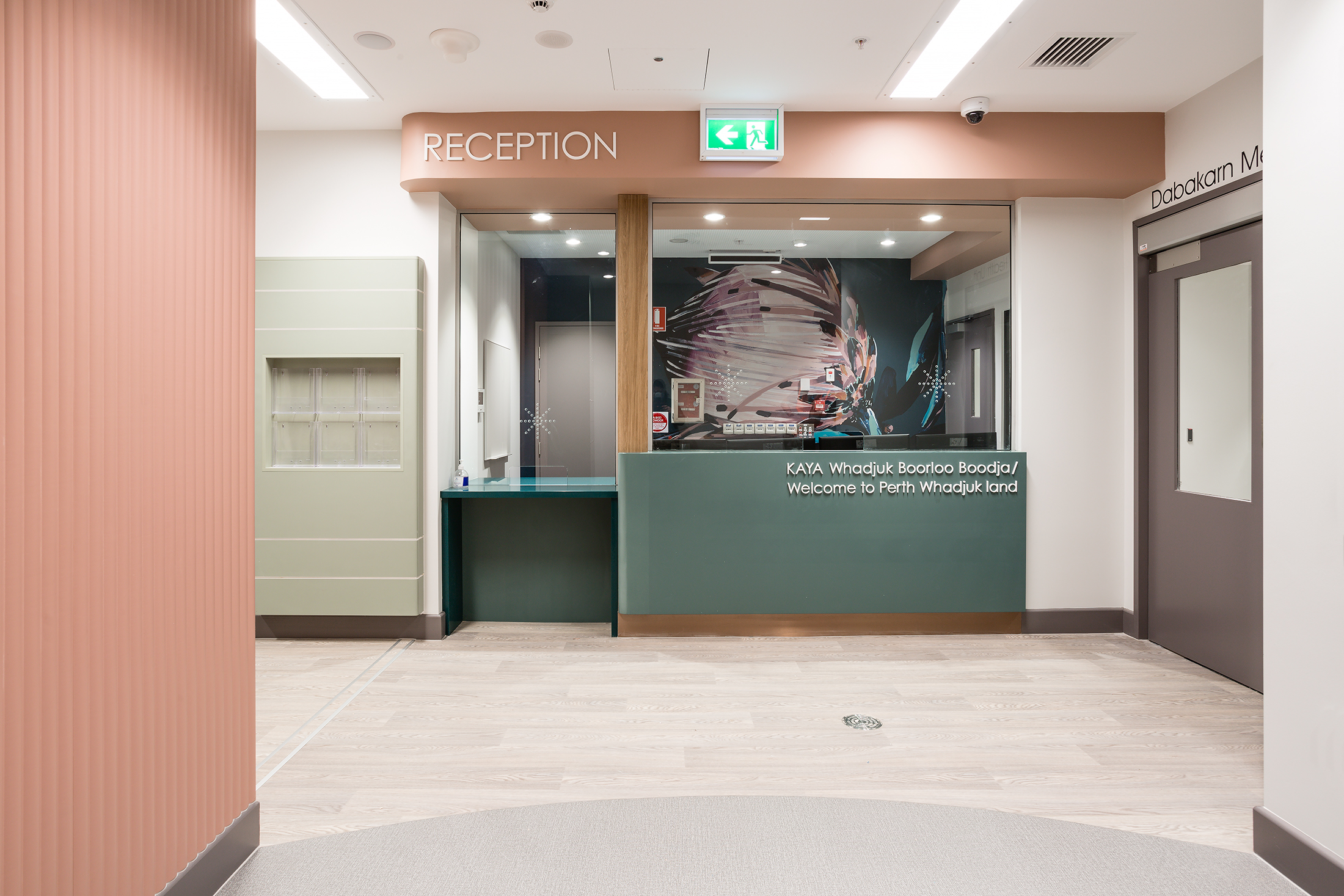
Unit boosts treatment options for complex mental health patients
In June 2022, EMHS opened a new Mental Health Unit (MHU), Dabakarn, at RPH — a major addition to EMHS’ suite of mental health services.
Establishment of the unit significantly bolstered our capacity to treat patients with acute and complex mental illness, with capacity to accommodate up to 12 consumers in separate rooms.
Significantly, as RPH’s first authorised ward, it can provide for the care of individuals under the Mental Health Act 2014 requiring a locked-ward bed, as well as voluntary patients.
Dabakarn’s focus on recovery-oriented care in an involuntary setting strengthens the integrated consumer recovery journey across EMHS. The unit will also play an important role in alleviating pressure on RPH’s ED by assisting patient flow.
New Bentley modular ward taking shape
A new 30-bed modular ward is starting to take shape at BHS, which is part of a 2021 State Government commitment to increase bed capacity across WA’s public health system.
The building is made up of three pods — administration, inpatient and therapy pods — the latter incorporating a gymnasium, dining room and group therapy area.
A lightweight construction technique has been used for the build to expedite the project, which will build capacity at BHS and help free up tertiary beds at RPH for patients requiring more acute care.
The new pods are expected to be finished by mid to late September 2022.

